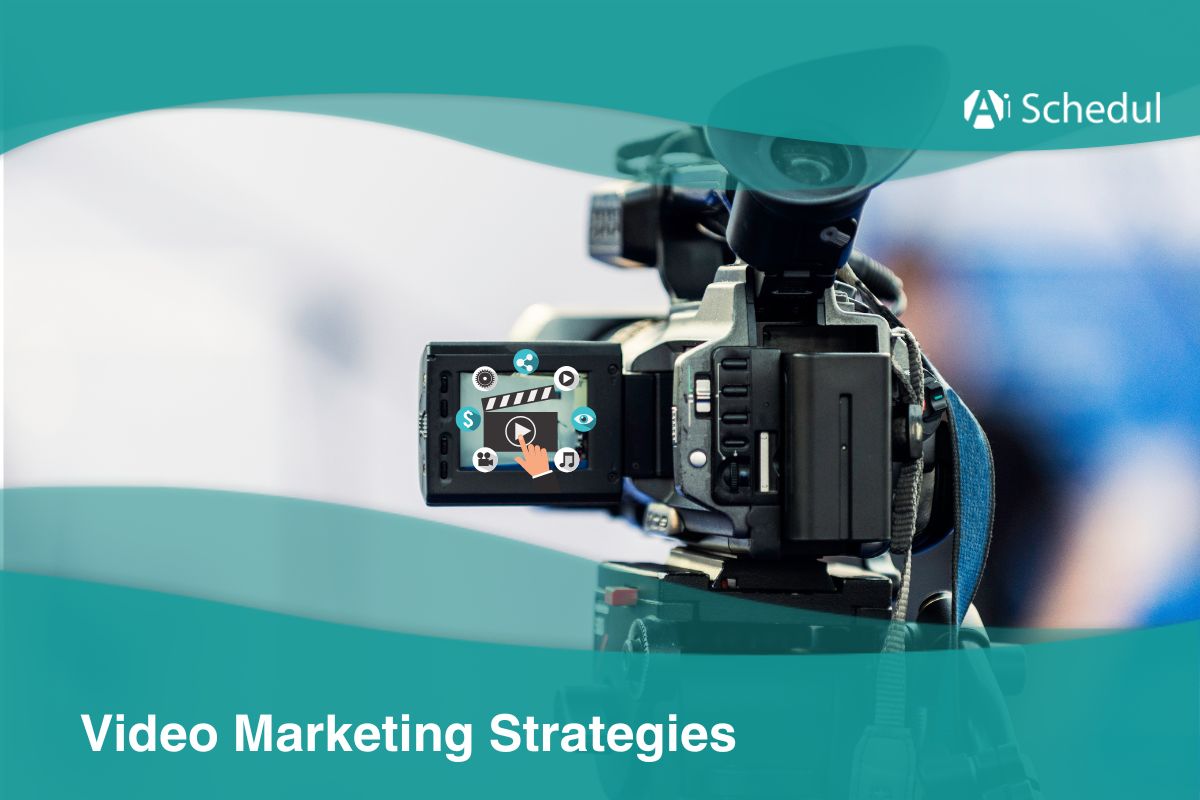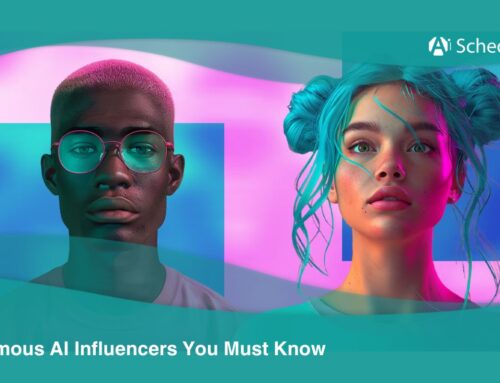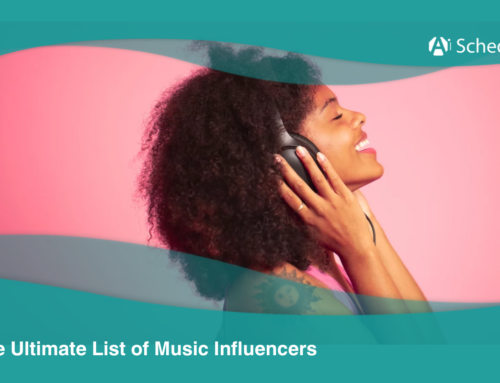Take a look around; most people you see are probably looking at their phones, right? And likely, more than half are watching a video. It’s clear that videos are the most popular content on social media today. That’s why video marketing is now more important than ever.
As a brand to attract more viewers, you need to have a social media video strategy to be the one that people scroll and watch on their phone screens.
Are you ready to boost your views on social media? Get ready to learn more about video marketing.
Table of Contents
What is Video Marketing?
As the name indicates, video marketing is using video content to promote a brand, product, or service. The goal of this video content creation is to raise awareness, drive engagement, and boost sales.
In short, if you incorporate video content into your marketing strategy that is going to help your customers move through the funnel, it falls under video marketing.
In this competing business environment, 89% of businesses now use video as a marketing tool because people now watch an average of 17 hours of online video per week (an average of 52 minutes per day). So, you have 17 hours to appear on their screens and present yourself.
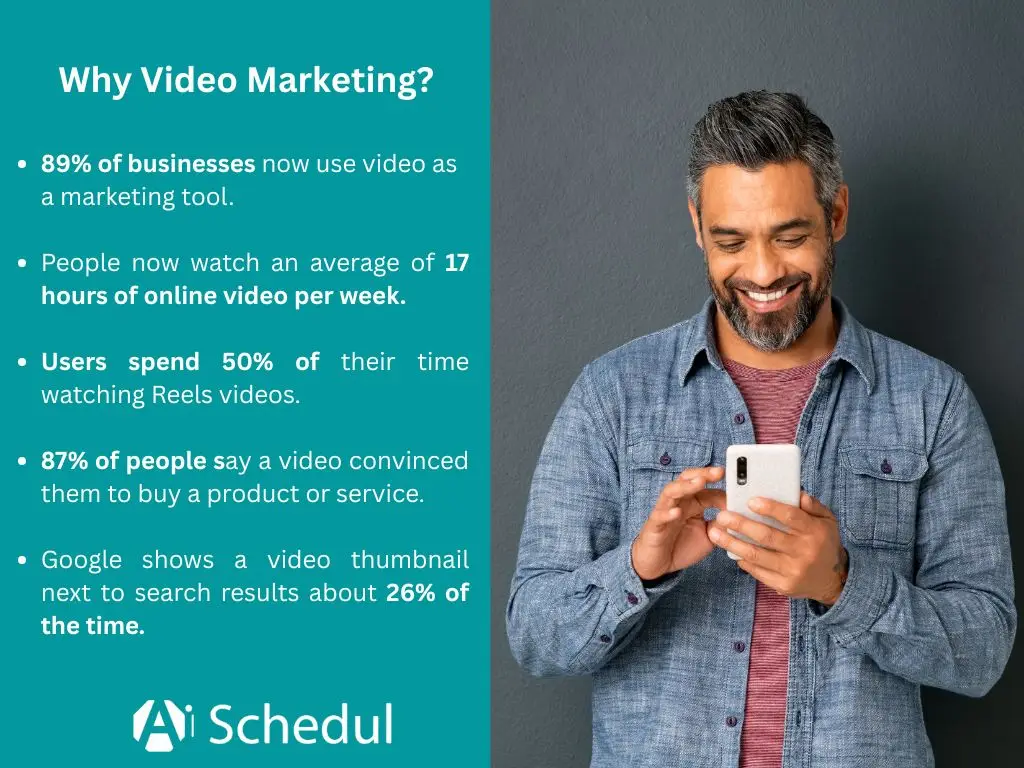
However, you can’t just make a video and throw it on the internet, hoping people find it and get engaged. You need a strategy.
Before we delve into video marketing strategies, let’s first examine its benefits.
Benefits of Video Content Marketing
If you are not incorporating videos into your marketing strategies, you are missing a huge chance. Here is why:
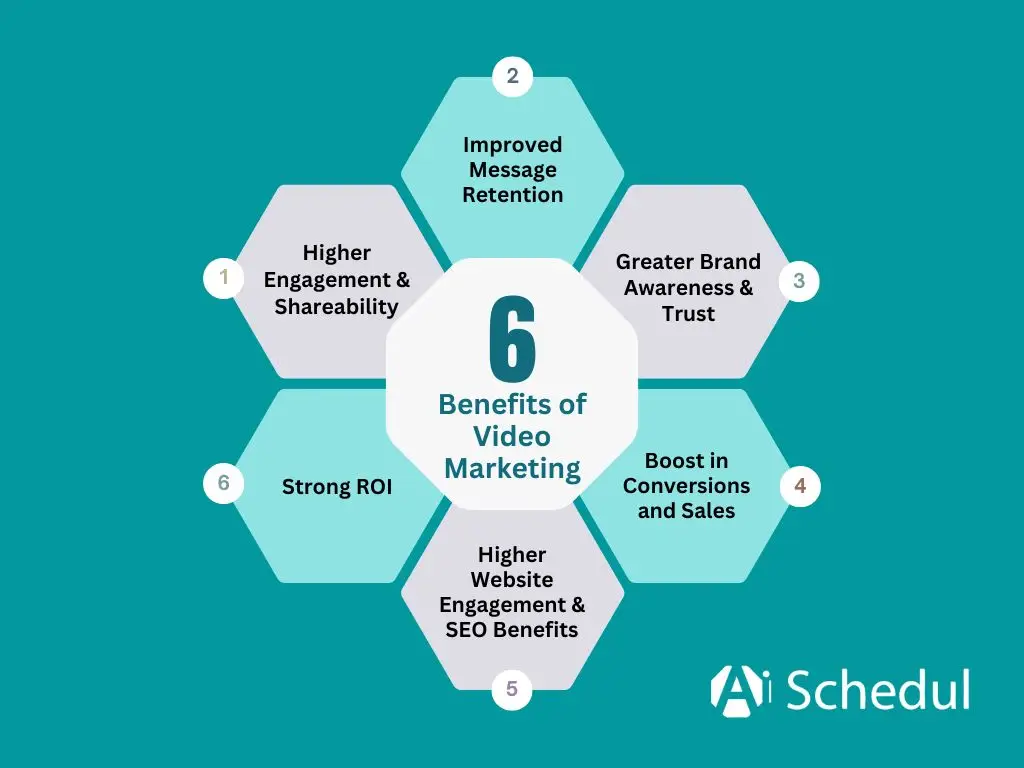
#1 Higher Engagement & Shareability
Video is by far the most engaging content format on social media. Did you know that video posts generate 1,200% more shares than text and image posts combined? Therefore, sharing videos on social media can easily increase your engagement and shareability.
#2 Improved Message Retention
The combination of visuals, audio, and storytelling creates a more memorable experience. That’s why people usually understand the message in a video more easily than when they read a story.
Thus, showing your product from different angles and explaining its benefits will likely capture more interest than simply displaying an image with accompanying text.
#3 Greater Brand Awareness & Trust
Undoubtedly, one of the primary goals of a marketing strategy is brand awareness. Video is excellent for storytelling and conveying your brand’s personality, which helps increase awareness and trust.
By consistently appearing in video content, your brand becomes more familiar and relatable.
#4 Boost in Conversions and Sales
The stats show that 87% of people say a video convinced them to buy a product or service. And the main goal of every marketing strategy is to drive more sales, isn’t it?
#5 Higher Website Engagement & SEO Benefits
You can create a video and use it in different ways. One of them is on your website. There is no need to stick only to social media.
Adding a video to a blog post or as a product preview can increase the time people spend on your website, which can lead to better SEO.
#6 Strong ROI (Return on Investment)
Creating high-quality videos might require spending money, for example, on AI video editing tools, but ultimately, it’s still worthwhile.
When weighing costs vs benefits, marketers largely agree that video is worth it. 93% of marketers say video marketing has given them a good ROI.
This positive ROI comes from the combination of factors we’ve listed: higher conversion rates, more shares (free exposure), better brand loyalty, and more sales.
Video Marketing Strategies
Now that you know how important video content is, it’s time to learn about video marketing strategies:
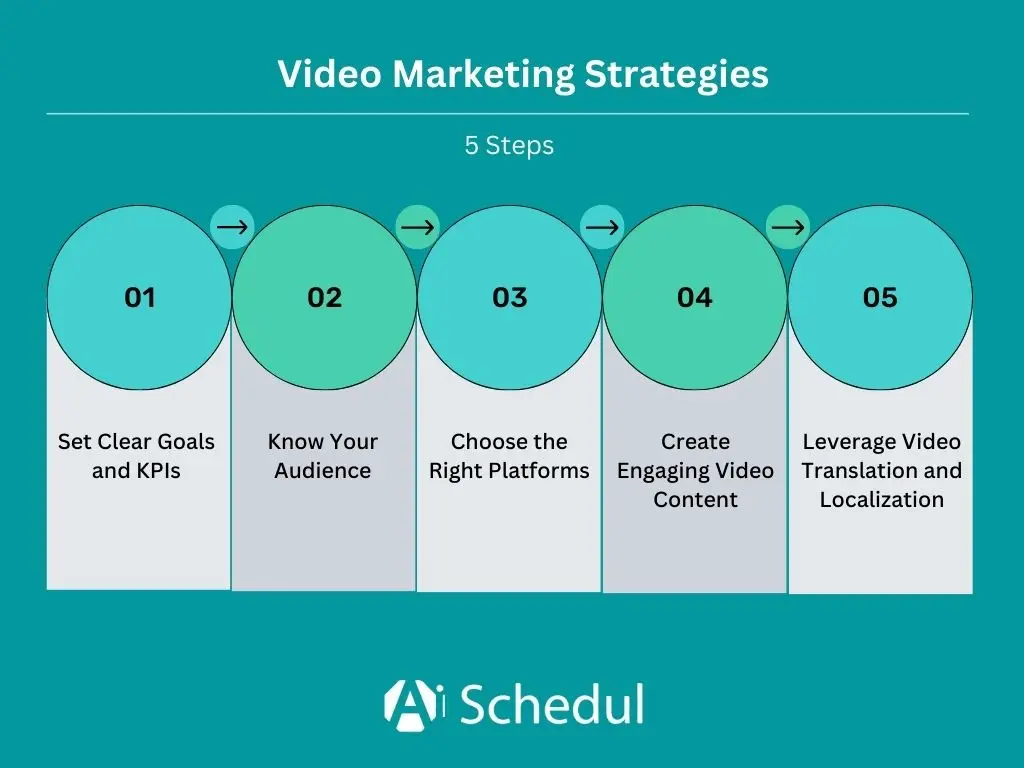
1. Set Clear Goals and KPIs
Every marketing strategy should have a goal. You should first thing about the end: what do you want to achieve with video marketing?
For example, your goal might be to increase brand awareness, drive more website traffic, generate leads, boost online sales by X%, or improve customer support.
Whatever it is, it should be measurable and practical. Clearly defining your objective will determine the kinds of videos you create and where you share them.
Here are some tips:
- If your goal is to generate leads, you could track how many people click from the video to a signup page. You could also track the number of new email subscribers you gain after a video campaign.
- If your goal is brand engagement, you might focus on share counts and comments as indicators of community buzz.
- To increase brand awareness, you should check out video views, impressions, or brand mentions.
- If your goal is to increase sales, your KPI can be the number of purchases after watching the video, conversion rate from video viewers, or revenue generated per video campaign.
2. Know Your Audience
Knowing your target audience is a basic rule of marketing, and it’s extra important for video content. Different audiences have different content preferences and online behaviors.
So, research who you are trying to reach with your videos. Key questions to ask:
- What are their demographics (age, location, language)?
- What social platforms do they use most?
- What problems or interests do they have that your video can address?
3. Choose the Right Platforms
Once you understand your target audience, you can prioritize the social media platforms on which you want to be active.
For example, if your target audience is mostly Gen Z, you know that TikTok will be the main place to present yourself. However, it is always wise to share videos on different social media channels to gain more views and let more people know you exist.
It’s usually more effective to focus on the 1–3 platforms most relevant to your audience. Here’s a quick guide to major platforms and how to approach them:
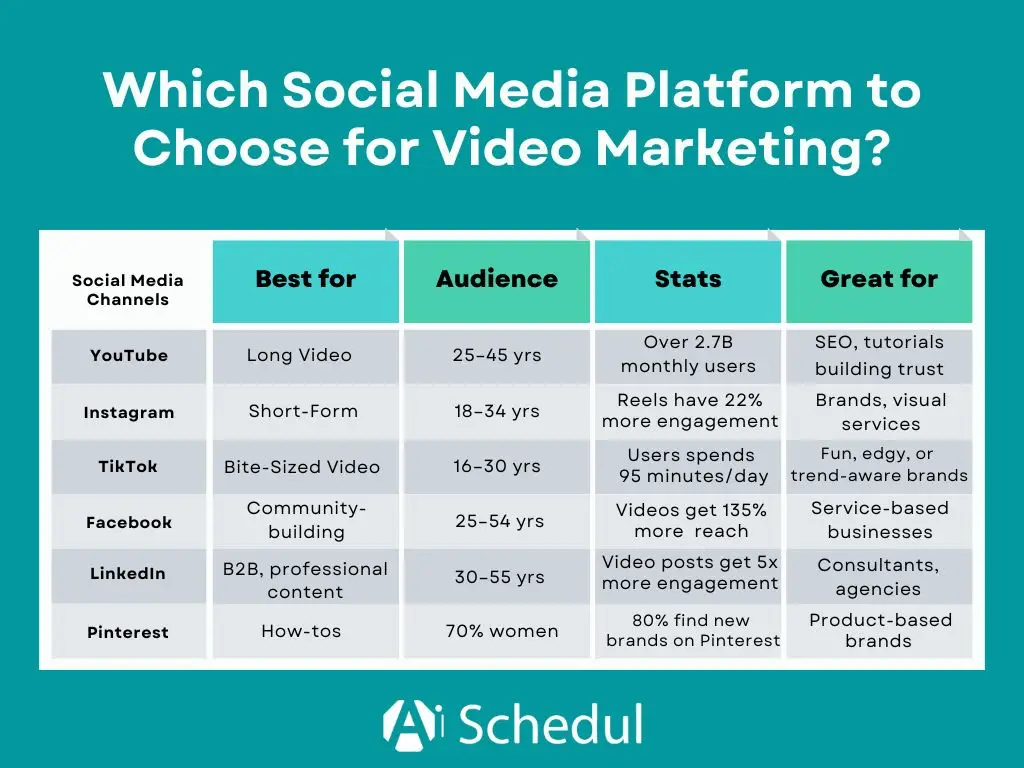
YouTube:
- Best for: Long-form content, how-to videos, educational content.
- Audience: 25–45 yrs, global, high search intent.
- Stats: Over 2.7B monthly users; 70% of viewers use it to solve a problem.
- Great for: SEO, tutorials, and building trust over time.
Instagram:
- Best for: Short-form, visual, behind-the-scenes content.
- Audience: 18–34 yrs, especially mobile users.
- Stats: Reels have 22% more engagement than standard video posts.
- Great for: Brands, visual services, influencers.
Note: If Instagram is your main channel, these strategies for Instagram video marketing might be helpful.
TikTok:
- Best for: Viral, creative, bite-sized content.
- Audience: 16–30 yrs, trend-focused, highly engaged.
- Stats: Avg. user spends 95 minutes/day; 50% have bought after seeing a TikTok.
- Great for: Fun, edgy, or trend-aware brands.
Facebook:
- Best for: Community-building, live streams, ads.
- Audience: 25–54 yrs, strong local presence.
- Stats: Native videos get 135% more organic reach than images.
- Great for: Service-based businesses, older audiences, local targeting.
LinkedIn:
- Best for: B2B, professional content, thought leadership.
- Audience: 30–55 yrs, decision-makers, professionals.
- Stats: Video posts get 5x more engagement than text posts.
- Great for: Consultants, agencies, high-value services.
Pinterest (Idea Pins):
- Best for: How-tos, lifestyle, design content.
- Audience: 70% women, DIYers, planners.
- Stats: 80% of weekly users discovered a new brand on Pinterest.
- Great for: Creative, product-based, or visual brands.
4. Create Engaging Video Content
Up until now, we know our audience and have set our goals. Well, it’s time to create the video content. The following tips can help you create more engaging video content:
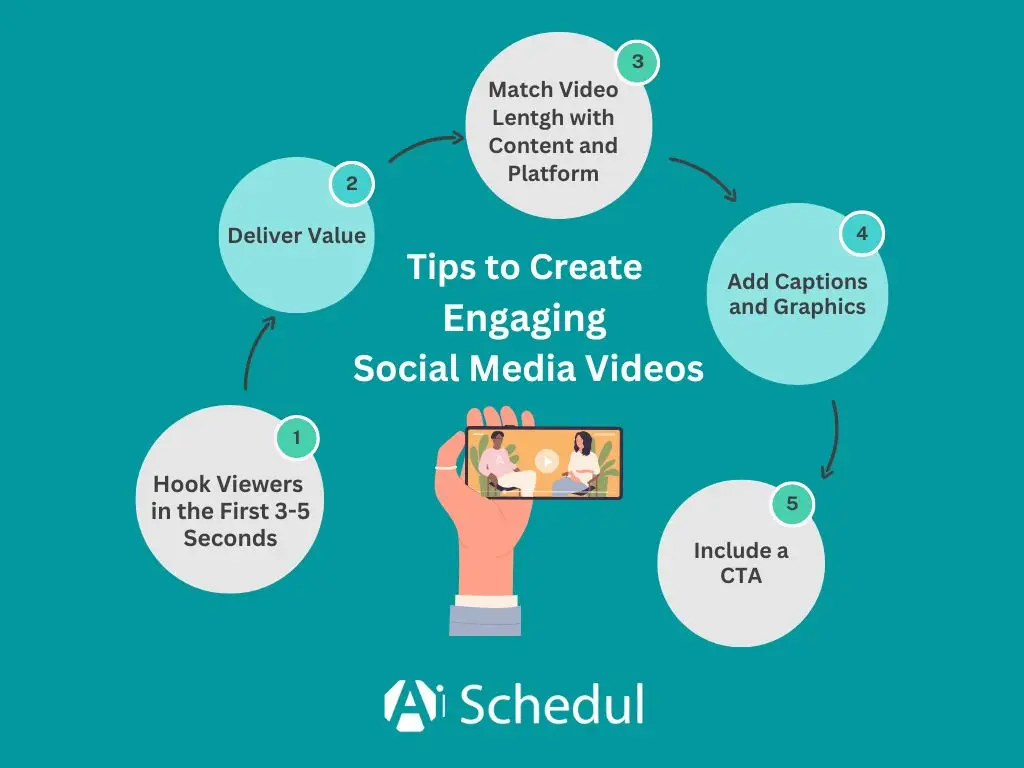
– Hook Viewers Early
It’s important to add something that can grab the attention of viewers in the first 3–5 seconds of your video. This could be a question in text (“Did you know…?”), a striking visual, a quick demo of the end result (“See how we doubled sales…”), or anything that stops the scroll.
– Deliver Value (Educate, Entertain, or Inspire)
To keep viewers watching until the end, your video must deliver value. If you know your audience, you will know what type of content is more appealing to them.
This can take the form of useful information (tutorials, tips, hacks), entertainment (humor, storytelling, surprise), or inspiration (emotional stories, motivational content).
– Keep it Short (Generally)
In the age of TikTok and Reels, short videos are getting more popular. Even YouTube added YouTube Shorts to gain more popularity among the younger audience.
For many marketing videos, aiming for under 60 seconds is a good rule of thumb, especially on social media.
However, that all depends on your audience and the type of content you want to create. The general rule is ‘video length should match content and platform’.
– Add Captions and Graphics
Always include captions or on-screen text for dialogue and key points, so your audience can still understand your message even if they mute the video.
This is an easy but often overlooked step that dramatically improves engagement – in fact, the use of captions in video marketing has increased 572% since 2021, as more creators recognize their importance.
– Include a Call-to-Action (CTA)
What should viewers do after watching your video? Don’t leave them guessing. It’s important to be clear about the action they should take after watching your video.
This could be spoken by the person on camera, shown as text, or both. Examples: “Visit our website to learn more,” “Sign up for a free trial,” “Subscribe for more videos,” “Comment below with your questions,” or even just “Follow us on Instagram for daily tips.”
The CTA should align with your goal for the video. If the video was purely awareness, the CTA might be to follow or share.
5. Leverage Video Translation and Localization
Video localization can be the most important strategy for video marketing, especially if you want to gain more followers globally.
Leveraging video translation means adapting your videos for different languages and regions through subtitles, closed captions, or dubbing (voice-overs), so that viewers can engage with your content in their native language.
Research shows 65% of non-native English speakers prefer content in their own language. So, they are more likely to get interested in your brand if you can spread your message in their language.
The good news is that it’s now easier than before because with the use of AI video translator apps, you can now easily translate your video into another language.
What is the Best Video Translation Tool?
Gone are the days when you needed expensive agencies for each translation. brandID.app is the most cost-effective way to translate your video.
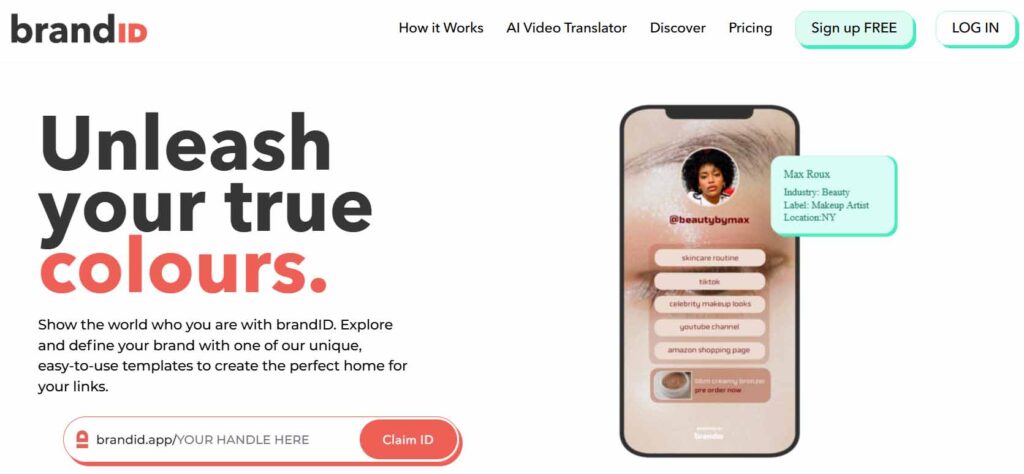
brandID is an AI-powered video translator that has emerged as one of the best tools for video translation on the market. With brandID, you can upload a video and have it translated into over 200+ languages with high-quality results, all with only a few clicks.
What’s remarkable is that it can preserve the original tone and voice of the speaker using advanced AI voice synthesis, so the translated voice-over still sounds like the original person – just speaking a different language!
Unlike most online video translators, brandID doesn’t require you to pay for a monthly subscription. You can join the brandID for free and pay for each video you translate.
Sign up on the platform and check it yourself.
Case Studies and Successful Stories
Nothing illustrates the power of video marketing better than real examples.
Here are a few video marketing examples from recognized brands (and a small business) that demonstrate different ways to succeed with video:
WestJet – “Christmas Miracle” Campaign
One of the successful video marketing stories belongs to WestJet’s Christmas campaign in 2013, which boosted WestJet’s holiday sales by 86% compared to the previous year.
What’s the story?
WestJet asked boarding passengers what they wanted for Christmas, and while the flights were in the air, WestJet teams bought and wrapped those gifts.
When passengers landed, gifts came out on the baggage carousel – and tears flowed. The entire experience was captured in a beautifully edited video.
Result: The video went mega-viral with 50+ million views, becoming one of 2013’s most shared ads.
Blendtec – “Will It Blend?” Series
Blendtec’s “Will It Blend?” YouTube series is another successful example of social media video marketing.
What’s the story?
In these videos, founder Tom Dickson dons a lab coat and attempts to blend all sorts of objects – iPhones, marbles, Barbie dolls – in a Blendtec blender.
Result: The videos went viral, leading to a 700% increase in blender sales over three years.
As you can see, creativity and emotional storytelling can lead to great results.
Bottom Line
Video marketing has become an indispensable part of a successful marketing strategy in recent years. Now that people like this type of content more than anything else, it’s essential for all brands to use this opportunity to get on the screens of their target audience.
Recognizing your audience is the first strategy you should consider before creating a video. Additionally, you shouldn’t forget about localization, as it’s one of the most important things to grow your business overseas. Use brandID to translate your videos into other languages.
FAQs
Q1: Is Video Marketing Really Worth It for a Small Business?
Yes, video marketing can be highly beneficial for small businesses, as it effectively captures attention and engages audiences in a visually compelling way. With the rise of social media and video-sharing platforms, videos can help small businesses boost their online presence, enhance brand storytelling, and convey messages quickly and effectively.
Q2: What Types of Videos Should I Create for My Business?
For your business, consider creating various types of videos to engage your audience effectively.
- Product demonstrations highlight features and benefits
- Tutorials or how-to videos educate customers on using your products or services.
- Customer testimonials build trust and credibility, showcasing real experiences.
- Behind-the-scenes videos provide insights into your business culture and processes, creating a personal connection.
- Finally, promotional videos can announce special offers or events.
By diversifying your video content, you can cater to different audience preferences and enhance your overall marketing strategy.
Q3: How Do I Measure the Success of My Video Marketing Efforts?
Focus on key performance indicators (KPIs) such as view count, engagement rates (likes, comments, shares), and audience retention metrics to determine how long viewers watch your videos.
Additionally, track conversion rates to see how many viewers take desired actions, like signing up for a newsletter or making a purchase, after watching your videos.
Q4: How Long Should My Marketing Videos Be?
Marketing videos should typically be between 30 seconds to 2 minutes long, depending on the platform and purpose.
For social media, shorter videos (15-30 seconds) tend to capture attention quickly, while more in-depth tutorials or product demonstrations may extend to 1-2 minutes.
The key is to deliver your message concisely and engagingly, as viewers are more likely to lose interest in longer videos. Always focus on keeping the content relevant and impactful to maximize viewer retention and encourage action.
Q5: How Can I Reach Non-English or Global Audiences with My Videos?
To effectively reach non-English or global audiences with your videos, start by providing subtitles or closed captions in multiple languages, ensuring accessibility for viewers who may not understand the original language.
Utilizing professional translation services, like brandID, can help maintain the message’s accuracy and cultural nuances.

